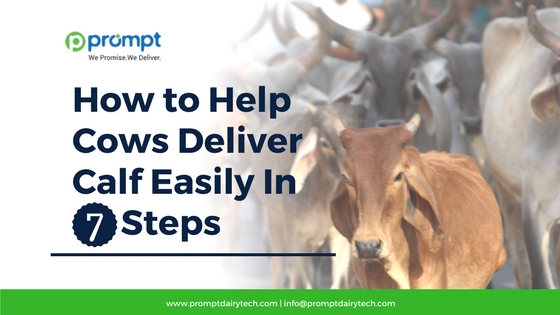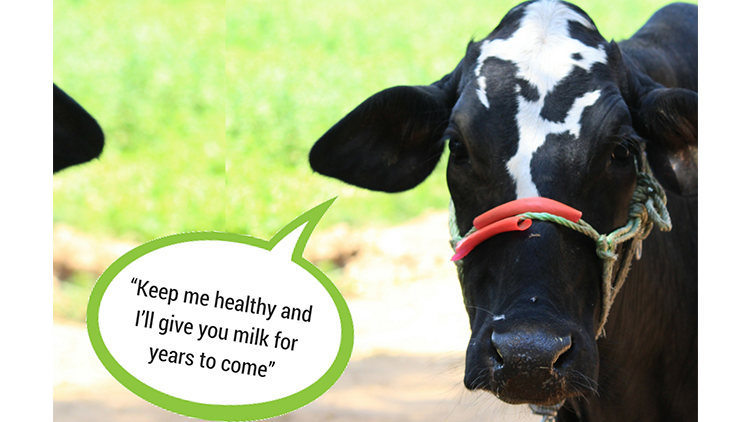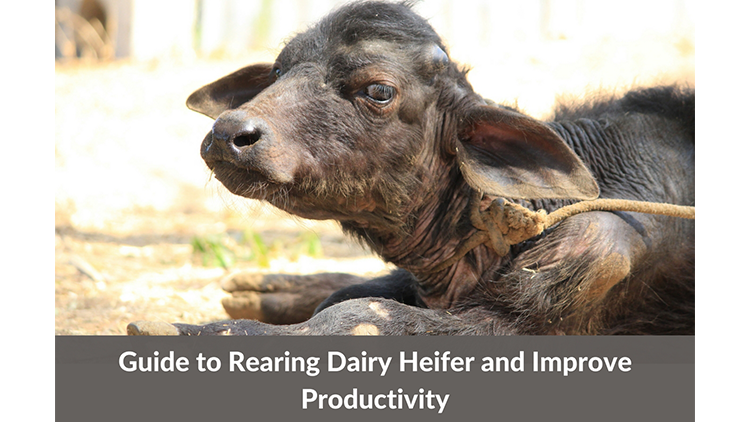Calving is the most stressful and challenging time for any cow—no matter how healthy or well looked after it is. That is why, as a farmer, you should be prepared well enough in advance with Animal Husbandry Software and whatever is required to make calving as comfortable and less painful as possible for both, the cow and the new-born calf. Calving, specifically in heifers, is more demanding because it is the first time they’ll be giving birth. However, you should take necessitous precautions and care for all the pregnant cows irrespective of the number of times they have given birth earlier.
There’d arise situations when it would become difficult for a cow to give birth due to health reasons or external factors, and you’d not be in a position to help it as much as you want to. Hence, we recommend that you call in a veterinarian to administer and abet you in such trying times. Here, we divulge seven steps for you to assist a cow in giving birth comfortably.
1. Wait for the cow as it begins calving
A pregnant cow will start showing symptoms when it is ready to give birth. It will move away from the rest of the heard to an isolated space. You would be aware beforehand of which cows are pregnant, so you’d probably know the right time to calve.
2. Watch out the phase of her labour
A pregnant cow, during the time of calving, will become restless. It will cause her to lie down, get up, stroll around, and repeat the same to alleviate the pain and relax. As the labour continues further, you will notice a yellow, elliptical water sack surfacing out of the cow’s vulva followed by calf’s front feet facing downwards and later its nose. You may need rally round if the calf does not appear entirely after hour-long labour or the front feet of the calf is facing upward rather than downward.
3. Render required help
The calving process may or may not be smooth at all the times. The first thing to do is to ensure that the mother cow is calm enough to let you support her during calving. It helps in confirming your safety as well because if the cow becomes aggressive, chances are it might start kicking and jumping around where you may end up hurting yourself.
4. Prepare yourself to provide assistance
You must maintain a reasonable level of hygiene for yourself before you begin assisting in calving. It is mandatory for the calf to avoid catching any infections from any potential sources. Wash your hands from the shoulder down toward the fingers, put on clean gloves, and apply sufficient lubricant.
5. Pull the calf out
Tie a calving rope around the calf’s feet and pull it out and down towards the floor only when the mother cow is pushing. Otherwise, you may end up hurting the cow and the calf. If the calf’s rear feet appear out of the vulva instead of front feet, you must quickly tie the calving rope around the back feet of the calf and pull it as fast as you can. Do not waste time in pushing the feet of the calf and try to get its body into the right position. At times, there may occur instances where the tail, or head, or front legs up will be surfacing out of the vulva. Such cases are rare but difficult to manage and perilous for the mother and the calf. Therefore, we strongly advise you to contact a veterinarian to oversee and resolve such situations unless you hold enough experience in the same.
6. Help the calf breathe
Get the calf to breathing as soon as it is out of the cow’s body. It takes 30 seconds to a minute to help the calf breathe by cleaning the amniotic fluid spread all over its nose, clearing its ears with water, putting it to rest over a straw bed, or performing artificial inhalation if needed.
7. Place the mother and its calf together
When the calf is breathing and stable, put it into a secluded barn along with its mother. Keep the straw and water in pen for easy access. It is necessary for the calf to feed on its mother’s milk within few hours of its birth as it helps in supplying required nutrition and immune the body against any diseases. If the calf is unable to feed on its own, you might have to provide frozen colostrum manually to increase the chances of the calf’s survival.
Wrap-up
If you find this information useful and wish to gain a deeper insight into animal husbandry or learn about dairy farm management software, click through our website www.promptdairytech.com.
Keep exploring!



